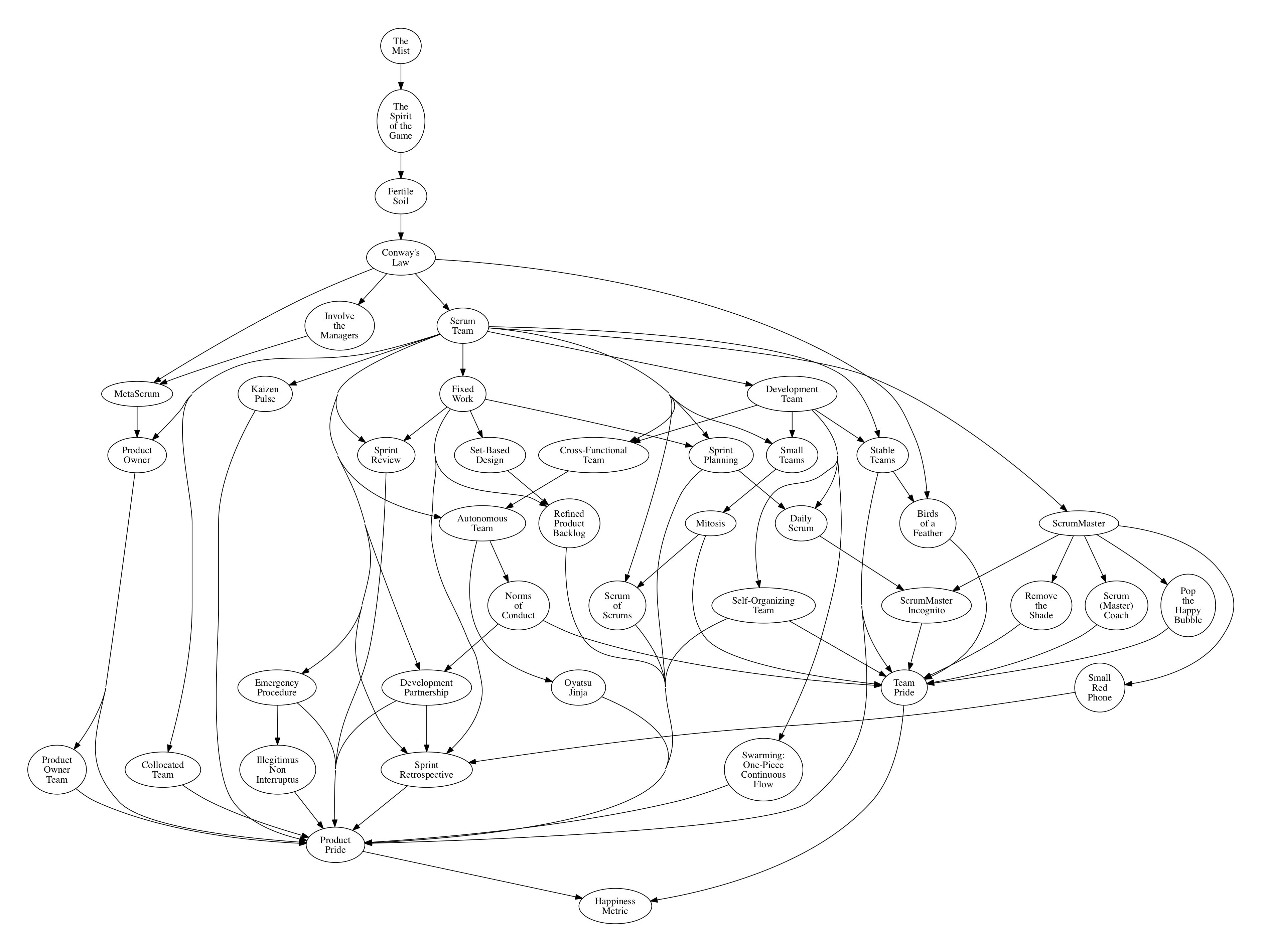leadership_readme
Thoughts on working together, and supporting organizations
Chartering
I like to aim for a lightweight workflow for Overarching planning documents (Charters / Charters / etc) as they move from an idea until they’re ready to be implemented. Usually this process is managed in an ad hoc fashion, and as a result often lacks visibility and consistency. Here is what we are aiming to avoid.
Issues:
- incomplete view of medium term priorities
- some potential Charters lose momentum
- in progress Charters are reviewed inconsistently
Goal:
- complete visibility into all planning and design work
- consistent process and cadence moving from gathering requirements to completed Charter
Non Goal:
- define the actual process of writing a Charter
-
define the contents of a Charter
- broad effort level
- story pointing
- customer value tags
- revenue value tags
- operation value tags
Principles
Most of these will have already been implemented. For more, see the section on teams and meetings
- Broadly source input
- Build consensus and education around approaches
- Execute with focus and accountability
- Measure what worked and what didn’t to iteratively improve
⚠️ Only prototype-in-isolation what you are willing to throw away once cross-functional input comes, from Agile Planning.
( spikes, and gold spikes )
Background
The idea of reviewing and leaving comments on a completed Charter is well-established in the tech organization, and the subsequent epic process is mostly standardized. However the process of actually developing a Charter has largely been left as exercise for the reader. This worked fine when the vast majority of the work on Charters was done by 2-3 people, but as the Engineering and Product teams grow, we need some process to better coordinate everyone involved.
As well, the Charter process in Engineering generally occurs after some Business planning. Afterward, a release or launch planification helps the company own the success. These major stages needed a place in the big picture. Here we’ll proposes to outline and detail all of that, in a way that can translate to input from stakeholders org-wide.

Stages of Planning, Delivery, and Operationalization
We will consider a few models for how cross-team interaction can look. These will expand and build upon one another.
This doc does not include specific guidance on ratios of types-of-staff within the team, but for related reading see this article. This may fall under the topic of ‘org planning’, ‘scaling teams’, and other cost-to-value ratios. Engineering / Technology leaders will not set these purely on their own, and instead work with financial, ops, or other P&L staff (even if the engineering leader / role fully owns their P&L).
Product and Engineering
The concise chartering process focuses on Product p. anning, Engineering, and Release:

Whole-Company
Charter Types stand as the granular versions of broader phases of work that go on within the whole lifecycle of corporate planning. These phases can overlap. The current consideration of these looks like this:

Glossary
- A dash ‘-‘ is minimal involvement, such as gut-checks about scope changes, etc.
- Release and Rollout is sometime called Launch
- Analysis can include monitoring existing data, or developing new reports or monitors. This should be prepared in advance of the release.
- Live Ops can involve new, response, and messaging templates, whole-team quality, revenue operations (‘revops’), and FAQs. error reporting, and error codes, can become the language/symbols by which these teams quickly act, operate, and evolve their practice. These often get recorded into ‘runbooks’ that give guidance when situations occur.
For detailed handling of configuring systems to hold all of these practices, you should maintain docs on how to repeatably do setups. Eventually, these can be automated.
Checkpoints
Every Charter should have the following checkpoints:
Requirements Review
The stakeholders must agree on the requirements once they are gathered. If they do, product and engineering should agree about how to proceed with writing the Charter and schedule incremental check ins. If they cannot agree, the requirements must be reworked.
Incremental Charter Check In
The product and technical designs should be informed by each other and should be iterative, so check ins among the people working on producing the Charter are really important. They’re also a good way to keep momentum.
Final Review
Once the Charter is complete, all stakeholders must agree on the scope of work. Ideally stakeholders should be involved in prior checkpoints so there aren’t any huge surprises at this point.
Stakeholders vary depending on the type of Charter. The stakeholders for a product Charter would include a product manager, the lead engineer and a business sponsor. For an eng Charter, the stakeholders might be a group of engineers.
For eng Charters, the tasks handled by a product manager would be either handled by the lead engineer (e.g., gathering requirements) or skipped (e.g., producing a product design).

Agile Ritual
I find that much of the literature on Agile practices involves the use of euphemistic phrases. You may have seen these in examples like ‘pop the happy-bubble’, etc. It appears that all of these are rooted in the narrative process of mind. Examples of pattern languages underscore this, such as for

The theoretical roots of this extend from the concept of Literary Topos, which are akin to Jung’s archetypes but potentially set in a more rich semantic ecosystem. Literary Topos may be the granule of character archetypes, in the sense of Joseph Campbell’s work.
Such narrative topoi certainly evolve with the changes of culture, at the macro level and within professions. When used skillfully they should lubricate the system of communication. In contrast, when the macro-org is dysfunctional, a narrative topos will be experienced more like trope, and often create the opposite effect.
In a later article, we can look at how this psychological schema graph intersects with the operational schema. Indeed, both are roadmaps. Doubtless that excessive lag between certain elements of each feel like real drag in the experience of team flowstate.
Agile Anti-pattern
These anti-patterns are a mix of cross-team situations, and inter-team dynamics. They have been source from Steve McConnell’s “Rapid Development,”. Despite the book being more than 25yr old, these factors have largely not disappeared. Such shows that the issues are human conditions, and require interpersonal strategies (management) instead of just commitment-to-principle.
- Undermined motivation
- Weak personnel
- Uncontrolled problem employees
- Heroics
- Adding people to a late project
- Noisy, crowded offices
- Friction between developers and customers
- Unrealistic expectations
- Lack of effective project sponsorship
- Lack of stakeholder buy-in
- Lack of user input
- Politics placed over substance
- Wishful thinking
- Overly optimistic schedules
- Insufficient risk management
- Contractor failure
- Insufficient planning
- Abandonment of planning under pressure
- Wasted time during the fuzzy front end
- Shortchanged upstream activities
- Inadequate design
- Shortchanged quality assurance
- Insufficient management controls
- Premature or overly frequent convergence
- Omitting necessary tasks from estimates
- Planning to catch up later
- Code-like-hell programming
- Requirements gold-plating
- Feature creep
- Developer gold-plating
- Push-me, pull-me negotiation
- Research-oriented development
- Silver-bullet syndrome
- Overestimated savings from new tools or methods
- Switching tools in the middle of a project